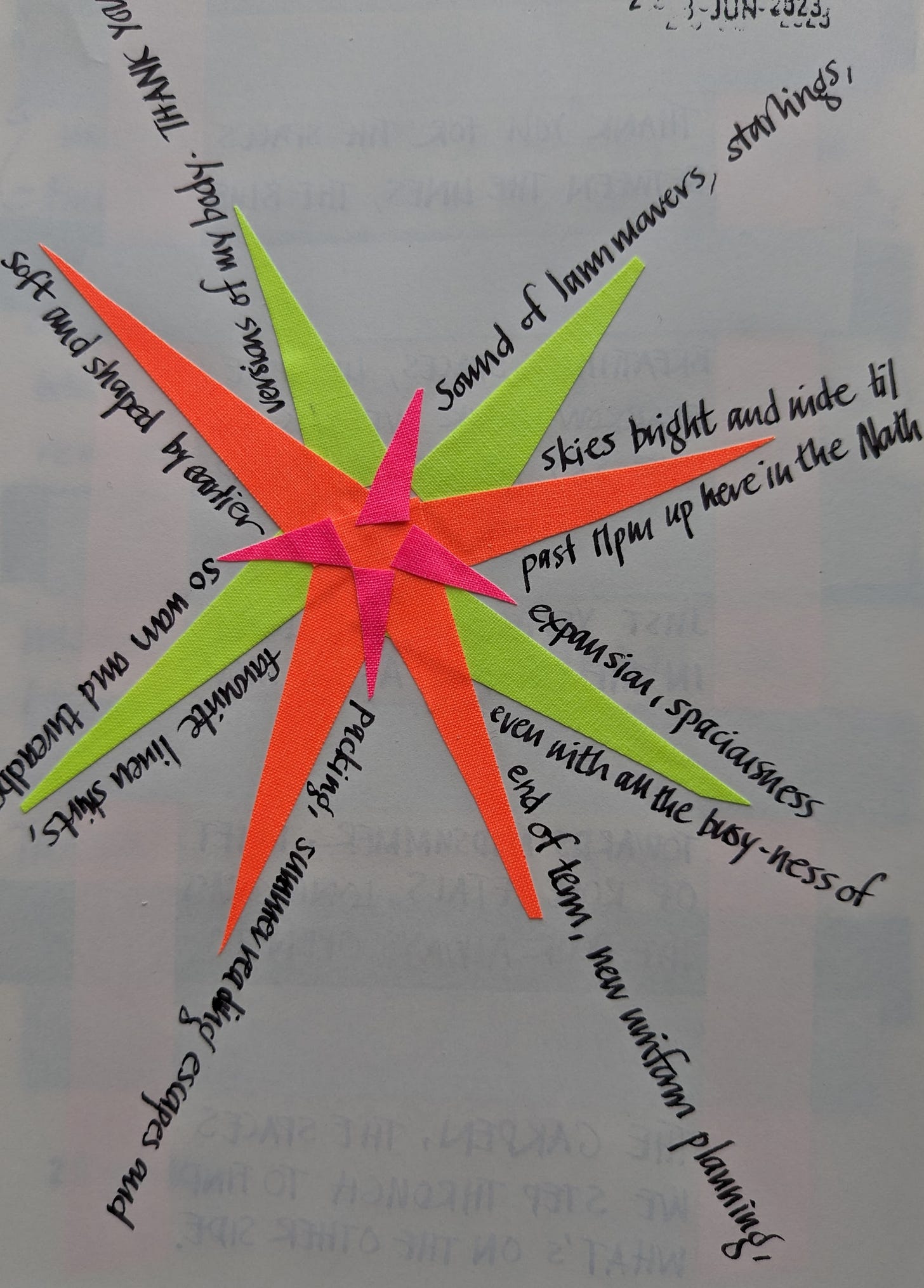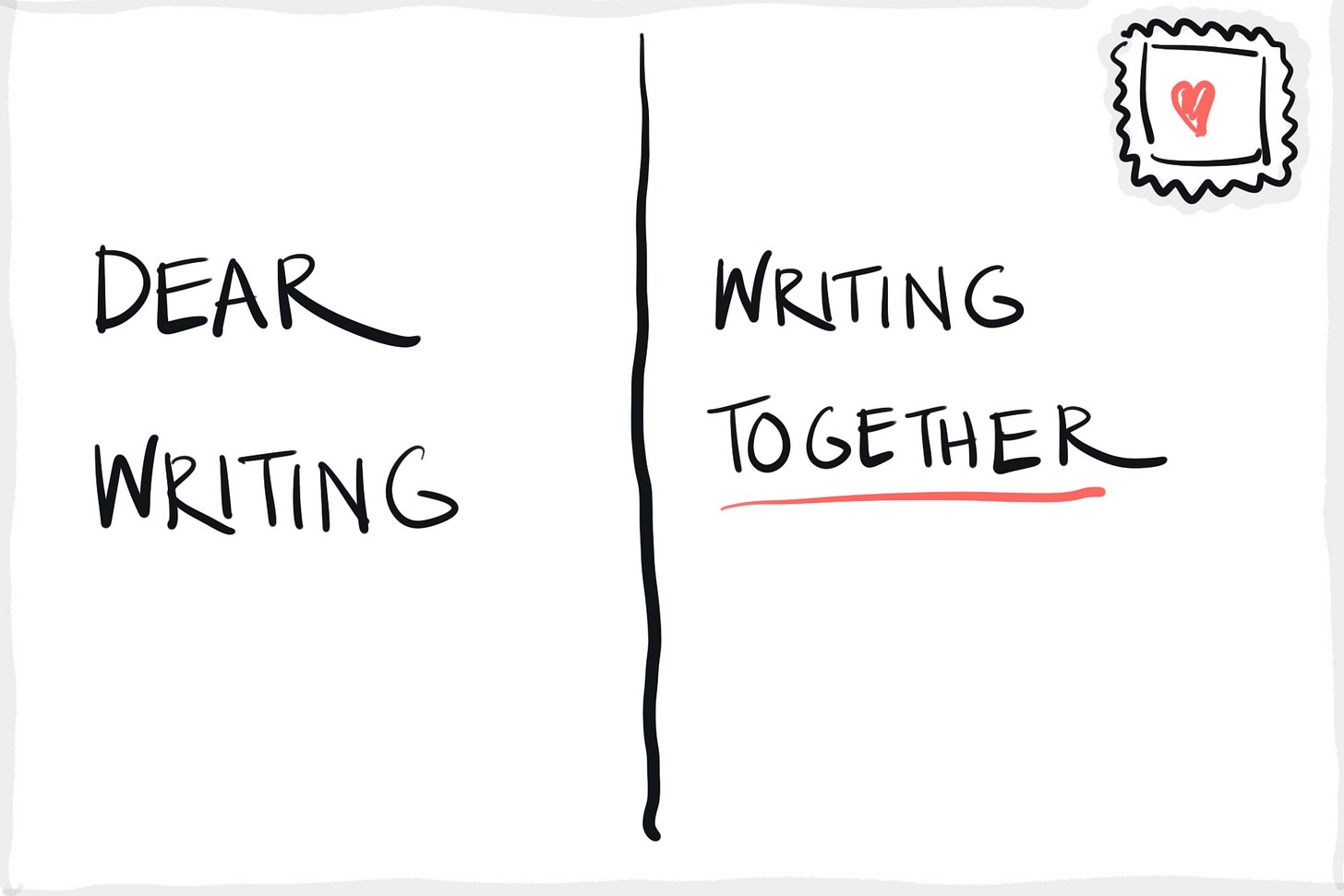Dear friends,
It’s very warm here in my part of the world right now. I love the sunshine but today is very humid and heavy, which helps to remind me to try to take things a little more slowly.
After a very challenging year, I’m really working on that and, for me, my writing practice is a key part of this process.
I thought I’d share some of the ways that writing can help us to slow down and cool our over-worked and jangling nervous systems.
There is currently very little ‘hard’ evidence for any this,1 but I’m now convinced that a writing practice, like other mindfulness, somatic or ‘flow’ practices, can help to regulate our nervous systems. I emphasis the word can here, because I don’t think this effect is by any means automatic.
For example, if writing has become a place where you berate yourself for not being good enough, or if you’ve been told by someone else that you can’t write or that writing isn’t safe for you, then writing isn’t going to help you to nurture your poor, overstressed body until you can learn a new way of approaching the page.
However, if you feel ready, you may like to experiment with these ideas:
Sit and write what you see, what you hear, what you feel for five minutes, without editing or pausing. This can help us to slow down and be more fully present in the moment. You can augment this too by taking a break from your desk and moving somewhere else to write. Take some deep, slow breaths. Notice what’s happening in your body as you write.
If this feels too unstructured and challenging - or just not safe enough for you - you could experiment with writing a still life. Choose a concrete object or group of objects - or a view from your window - and write about it. Focus on describing it in very specific detail. Pay close attention. What does it really look like, sound like, smell like? Paint a picture of it with words.
Write using a pen and paper. There is a suggestion (again, very early stage) that rhythmic movement can be soothing to our nervous systems. I certainly find that it’s helpful for me. The rhythm of your fingers moving across the keyboard can also be helpful. If you can, experiment with taking your notebook for a walk. The rhythm of walking can also be calming and conducive to the ‘flow’ state that may be essential to creativity.
If you’re feeling hot and bothered, you could experiment with writing about a place where you feel cool and comfortable. Write yourself into that place using all of your senses. Again, there is some evidence that visualisation can lower the physiological markers of stress. Writing can help us to visualise things in our minds very clearly. You may already have had the experience of writing a tense scene and feeling your body tense up and your breathing get shorter and faster. Use this somatic connection by writing about something that makes you feel cool and calm and find out what happens.
Many of us tend to think of writing as a very cerebral activity but, of course, our minds and bodies are intimately intertwined. It can be very helpful to acknowledge this when we’re writing because we may be activiting powerful mind-body connections.
If writing does - or doesn’t - help you to slow down and feel cooler and calmer, please do share in the comments. I’d love to hear about your experiences.
Our next Dear Writing Together Zoom session is Fri 16 June, 7pm (GMT +1).
Join us for £6 per month and get access to previously recorded sessions (note: I don’t record the confidential discussion parts); plus additional weekly emails designed to support you in your writing practice and/or your work with others using writing. We’re currently looking at the process of finding form for what we want to say/share.
Wishing you a week of calm. (Remember to leave some space on the page.)
Stay cool.
Sophie x
Much of the research so far has been in the area of ‘expressive writing’ (a paradigm developed by psychologist James Pennebaker). However, we have little information at present about the reasons why and the processes through which expressive writing might achieve the effects that it seems to do, or for whom it might be more or less helpful. There are also many other largely unresearched approaches to writing in health.







I love the idea of a written still life! Yes, yes, yes. I suppose I’ve been doing an emotional or spiritual version of that sometimes with the Everyday Divinas when I focus on an object, but I find the idea of writing a still life into being specifically as a descriptive exercise to be a very juicy idea.
Writing has always been helpful to cool off, so I'll be trying these suggestions over the weekend to see if it also helps cool down. Greece has been late to join summer this year but we're there today -- temperatures just spiked to 34C. In the past I've always found it helpful not just to change where I write (tip 1) but also when, eg early morning when it's cooler.